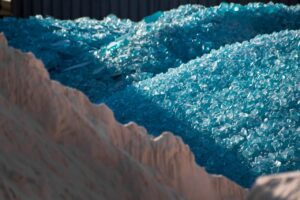Today, with the use of sodium silicate in soap making , its structure has changed quite positively. Soaps are part of the detergent family and their main constituents are fatty acids (various vegetable and animal oils) and alkalis (silicates and hydroxides) and other additives.
Application of silicate sodium in soap making (sodium silicate in detergents) as a substance that has alkaline properties; It has made this product strong and consistent. The addition of sodium silicate to the soap formula also provides a good substrate for neutralizing fatty acid solutions and alkaline compounds.
In general, in the soap industry, concentrated aqueous solutions of silicate sodium with the general formula Na 2 O mSiO 2 with a value of m = 2.8-0.2 mol / mol are used. Simplifies the production process flow to 2.8 -3.5 mol / mol.
To learn more about the use of sodium silicate in soap making and other detergents, follow us to the end of this article.
Why should we use sodium silicate in detergents?
sodium silicate in detergents softens hard water, meaning that as water passes through the treatment cycle, it may also absorb metal ions, including calcium and iron.
Metal ions make water harder’s Note that this is a big problem because hard water does not have the cleansing power. On the other hand, other compounds in body wash products, when removing impurities from the skin, metal ions in They also absorb hard water; Therefore, the skin cleansing process is disrupted.
This is where the use of sodium silicate detergents neutralizes metal ions in hard water. So that after using sodium silicate in detergents, in addition to having a skin free of bacteria and excess germs, you will also enjoy a special softness and softness. In sodium silicates, this property prevents detergents from settling on the fabrics, thereby reducing the ash content and whitening of the fabrics after repeated washing with detergents.
Advantages of using sodium silicate in soap making
The use of sodium silicate in detergents is more efficient than other additives, including solutions of carbonate and sodium hydroxide in water; You may be wondering why it is optimal and why most professional manufacturers emphasize the use of sodium silicate in soap making. Do not miss reading this article to get answers to questions like this.
The advantages of using sodium silicate in soap making are:
- Production cost savings
- Increase the cleansing power of soap
- Prevent soap sourness
- As an alkaline buffer
- Viscosity control
- As defloquulant (anti-agglomeration)
- Emulsifier

Production cost savings
sodium silicate in detergents is an important and inexpensive compound. In fact, it allows the soap maker to produce soaps with high strength and consistency as well as high water content. On the other hand, water is cheap, so we can say that the cost of making soap is greatly reduced.
Enhance the cleansing power of soap
Like any other salt, sodium silicate tends to react and integrate with other soap compounds, which in turn adds cleansing properties (cleansing power) to the soap, which is why it is used in laundry detergents.
Prevent sour soap
sodium silicate increases the foaming rate of the soap and prevents the soap from drying out quickly. Sodium silicate in soap making is used to increase the durability of soap bars. To prevent sourness in soap due to oxidation of fatty acids
As an alkaline buffer
The use of sho is due to its alkaline buffering properties. In this way, to keep the alkalinity of the soap solution constant, this will increase the consistency and strength of the soap against low or even high acidic agents. Due to this property of sodium silicate, corrosion and abrasion that other detergent acids can cause on metal surfaces; Is minimized.
Viscosity control (sodium silicate in detergents)
sodium silicate is used in detergents and soaps to optimize the washing performance so that sodium silicate solutions are easily added to the detergent paste and help facilitate the desired density by controlling the viscosity.
As defloquulant (anti-accumulation)
They act as defloquulants that prevent dirty re-deposition and cause the bond between the stains to break down.
Emulsifier
The use of sodium silicate in soap making is strong as an emulsifier so that it can act as a bridge between water (polar) and fatty acids (non-polar); Thus, sodium silicate molecules fall into the category of surfactants (active substances that are deposited on the surface and cause kinetic stability of the emulsion).
Reducing energy consumption
sodium silicate is an effective and cost-effective additive that improves washing quality without the need for advanced tools and excessive energy consumption; Improves.
Therefore, carbonate and sodium hydroxide solutions in water are no longer used to neutralize fatty acids and to soap fats and oils, but aqueous solutions of silicates sodium are used. In addition to improving the quality of the product, this also reduces the drying process during the final production of the soap.
Iran Silicate Company, by offering sodium silicate solid with Ratio range (2 – 2.2) and sodium silicate alkaline liquid Ratio 2, has provided the most suitable option for purchase to detergent manufacturers, especially soap makers. For more advice on the use of sodium silicate in detergents and how to buy them, contact the phone numbers available on the site.

